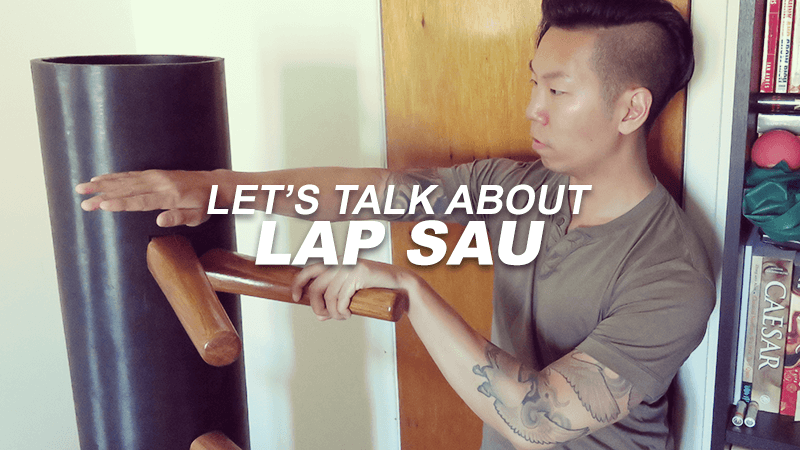Let’s Talk About Lop Sau
Let’s Talk About Lop Sau aka “The Pulling Hand”.

Lop Sau is a fundamental technique in Wing Chun but is only notable in the Wing Chun dummy form, more specifically, section 1 and section 6 of the form. The problem is that Lop Sau isn’t fully expressed in the dummy form because the dummy is stationary and the dummy’s arms aren’t fully mobile for pulling. In the video, I show what a good Lop Sau looks like based on how my school teaches it.
A good Lop Sau consists of pulling the opponent’s arm down to waist level and keeping it away from my body (at least 2-3 fist sizes away). The reason for this is to completely disrupt my opponent’s center and to prevent them from charging and taking me down.
This is How I Lop Sau
I’ve been told the best point to grab is at someone’s wrist level but going into Lop Sau doesn’t always guarantee that. The wrist is a harder target to grab but I can grab higher and slide my hand down to my opponent’s wrist.
I’ve been taught to grab with my thumb closed but I never use full strength when I grab. The reason why is that it makes it very vulnerable for me to get locked and a simple Tan Sau from my opponent can essentially control my arm that I grabbed them with. So when I grab, I always only use enough to contain the opponent and this allows me to quickly let go if my opponent does try to lock me.
The different types of Lop Sau, the pulling hand!
Lap Sau is one of my favorite techniques because it’s one of the best ways I can disrupt an opponent.
I know 3 variations of Lop Sau:
- Inside-Out Lop Sau – This was the first Lop Sau I learned. I start from the inside of an opponent’s space and then drive my arms outside to Lop them towards the same side my arm pulled them with but away from my body. For example, if I grab with my left arm, I pull them towards my left hip and away from me.
- Inside Lop Sau – This version is more stealthy and pulls the opponent’s opposite arm I use to Lop. For example, my right pulls my opponent’s left when they’re both on the same side.
- Elbow Pinning Lop Sau – This one is a mix between an elbow and a grab. It’s done by grabbing the same side arm I’m using then bringing my elbow over to pin my opponent’s chest while pulling my opponent towards me but away from my body. For example, my right grabs my opponent’s right, then I simultaneously bring my elbow up and over to pin my opponent as I am pulling my opponent towards me and away from my body.
Note: Always Lop Sau with elbow in and always Tan Sau to block before grabbing.
Keep Your Arms Close and Your Opponents Closer
A fully extended arm makes it easier to be grabbed and pulled. This was something my Sifu mentioned after he watched the video of me doing Chi Sao with my friend Marc (episode #069). He noticed that my arms were almost fully extended. From my perspective, I thought I was keeping Marc out but from my Sifu’s perspective, I was giving Marc my arm to be grabbed. I should have kept my arms at 135 angle, so that my arms were closer to me, which makes it more difficult for my opponent to grab and pull it.
Also, when I lose contact with my opponent, especially during Chi Sao, I need to quickly reestablish the connection. Even if I keep my guard hands up, I need to close the distance and maintain connection with my opponent. Without the connection, I’m not in range to do anything.
I think Wing Chun is only effective within a certain distance between an opponent. Once I’m out of range, it makes anything I do ineffective.


